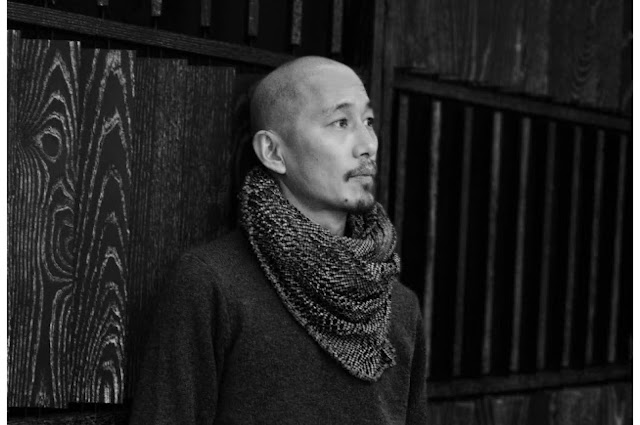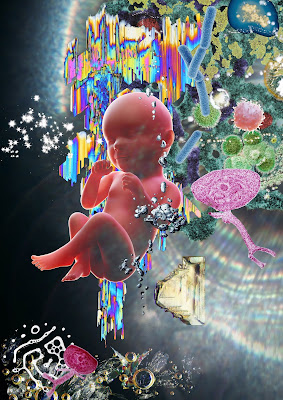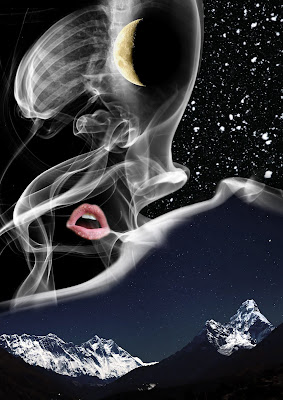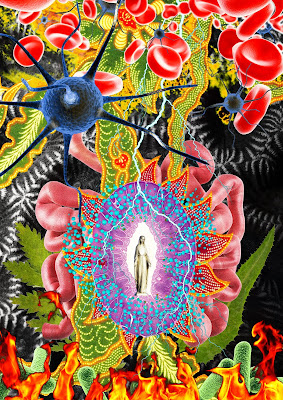Graphic designer Tomoki Uematsu
In 1997, Tomoki Uematsu earned a bachelor's degree in art from the NY Department of Illustration at the Parsons School of Design. In charge of visual branding for global companies such as Google, NIKE, and Amazon. He is also involved in the planning and production of the logo and signature of Tadao Ando's architectural "Church of the Forest". He has won numerous advertising awards, including Cannes Lion, TCC, and, ADC. Creative Director of the German branding design company Peter Schmidt Group Japan.

How long have you been in the Graphic Design field? What made you become one in the first place?
I took an illustration course when I was a university student in NY, but I always liked trying new things and couldn't keep the same style as an illustrator, so I decided to design. I've been designing for nearly 20 years, and I know the flow of work, so now art is a challenge for me. Now, I am exploring new expressions by experimentally incorporating artistic processes into my design work.
 |
| Memory of rainbow |
How did meditation and your art come into your life?
My wife was German when I had a child 11 years ago, so I wanted to do art as a future job in Germany. I've always loved art since I was a student, but I didn't until now, so I thought it would be a field where I could grow with my children.
Meditation was the only one in my family that I could teach Buddhism to my children, and when the child was born precisely at the time of the 2008 financial crisis, it was the first time to do freelance, and I needed Buddhism for myself, too. Teaching Buddhism to small children in an easy-to-understand manner of meditation is a way of thinking that is useful for self-observation and reality and can use regardless of religion. I still do meditation sometimes because I can convey it in my own words and thoughts by embodying meditation.
 |
| Nature + Emotion 14 |
Who inspires you along this journey?
It was the reason that coaching Mr. Hayashi recommended me to meditate. Still, I initially loved graphic designer and artist Tadanori Yokoo, and he went to India in the '70s to meditate and do works. What I admired was the best reason. Yokoo's work has no self-ego on his work, so I feel very free. It may be difficult to see his ego because various viewpoints intertwined with one theme, but it is the artist who had the most influence on my collage work.
 |
| Nature + Emotion 24 |
Do you believe in mental blocks?
At first, I started art with coaching, but I couldn't express the artistic style because I couldn't remove the design idea, no matter how much I knew in my head. About six months after I met a teacher of Qigong and removed mental blocks and things, I started to express the collage as I am today. I use this experience as a resource for artistic expression because I think that the information I experience physically is more valuable than the information I get on the Internet. Being an artist, I have no responsibility scientifically to explain mental block by if I can increase my imagination. From a marketing perspective, I think that any method can be used as long as there is a hole, not a drill.
 |
| Nature + Emotion 32 |
Why do you call your theme of digital collage "Nature + Emotion"?
I wanted to do work that was like meditating. Since the feeling of observing nature and the sense of meditation are similar, I thought it would be possible to express meditation using the elements of nature. To meditate is to see our feelings by watching ourselves. Therefore, I felt that expressing emotions with nature would bring it closer to the sense of meditation. However, it is essential not only for the refreshing feeling of the head when meditating but also for the soul of confusion before meditating because it has a human touch. I want to portray both the beautiful world of meditation and confused human sexuality.
What is your art process?
In my art process, all production work is done by improvisation to stop design thinking. One purpose is also an experiment to elicit the sense of subconsciousness obtained through meditation and qigong by performing such a process. Later, as another possibility, improvisation is more comfortable for the memories of physical experience to occur. The entrance is from meditation, but in the middle of the work, things like Picasso's paintings I saw in NY in the past and dance music rhythms I heard at clubs suddenly appeared. I feel the freshness where there is self-discovery in a place that I didn't intend to. From now on, I want to express myself without fear of changing things always to maintain a fresh feeling.
More info:
Website: https://www.tomokiuematsu.com


